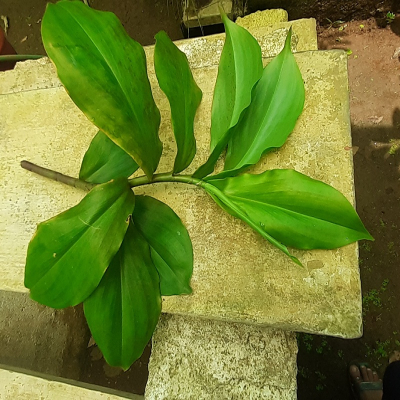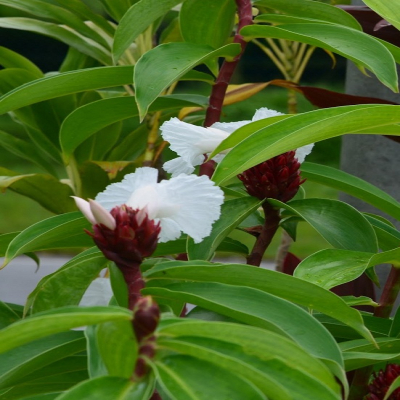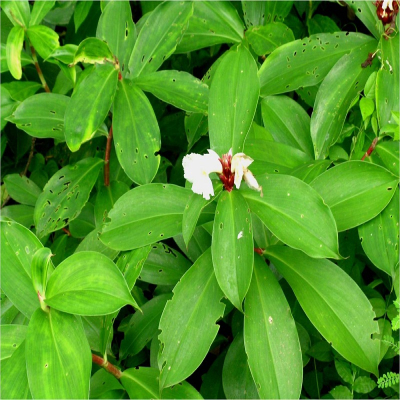Distribution and Habitat: Widely distributed in Asia in tropical countries like India, Nepal, Pakistan, Sri Lanka and China. In India, it occurs mostly in Arunachal Pradesh, Meghalaya, Nagaland, Tamil Nadu, Assam, Tripura and Kerala.
Botany: The plant is a succulent herb with long leafy spirally twisted stems, 2-3 m in height and horizontal rhizomes.
- Leaves: Simple, spirally arranged, oblanceolate or oblong, glabrous above, silky pubescent beneath with broad leaf sheaths.
- Flowers: White, large, fragrant, arranged in dense terminal spikes. Bracts are bright red. The single stamen present is perfect, lip large with incurved margins.
- Fruits: Globose or ovoid capsules with obovoid or sub- globose seeds
Properties: Saponins from seeds are hypotensive and spasmolytic. Rhizomes possess antifertility, anticholinestrase, antiinflammatory, stimulant, depurative and anthelmintic activities
Chemical constituents: Tubers and roots contain diosgenin, 5-α-stigmast-9(11)-en-3-β- ol, sitosterol- β -D-glucoside, dioscin, prosapogenins A and B of dioscin, gracillin and quinones. Various saponins, several aliphatic esters and acids are reported from its rhizomes, seeds and roots. Seeds, in addition, contain - α tocopherol. Essential oil from the rhizome contains zerumbone and α humulene.
Uses: Costus is one of the plants that contain diosgenin in its rhizome. Diosgenin is the starting material in the commercial production of steroidal hormones. The rhizomes are useful in vitiated conditions of kapha and pitta, burning sensation, flatulence, constipation, leprosy, skin diseases, fever, hiccough, asthma, bronchitis, inflammation and anaemia. It is used to make sexual hormones and contraceptives.
Agrotechnology
Soil and climate: Costus can be raised under a wide range of agro climatic conditions. It prefers sandy loam soil for good growth.
Propagation: Propagation is by rhizomes. The best season for planting is April-May. The seed rate recommended is 2-2.5t/ ha. The spacing adopted is 50 x 50 cm. After an initial ploughing, FYM or poultry manure should be applied at the rate of 10t/ ha and the field is to be ploughed again, irrigated and prepared to obtain a fine seed bed. Furrows are opened and the rhizome pieces are placed horizontally at a depth of 8-10 cm and covered with soil. Care is taken to place the eye buds facing upwards. After 70-75 days about 90-95% sprouting is obtained.
Manuring: Application of 5t/ ha of poultry manure and fertilizers at the rate of 60 kg P2O5 and 40 kg K2O/ ha as a basal doze, along with 80 kg N/ ha applied in 3 equal split doses gives good yields.
Irrigation: Desiccation of the young sprouts has been observed in the hot summer months, necessitating liberal water supply during the period. As September-November is the period of maximum tuberization, at least two irrigations should be given at that time.
Harvesting: Crop is harvested at the end of seven months. Harvesting includes 2 operations, cutting the aerial shoots and digging out the rhizomes.




